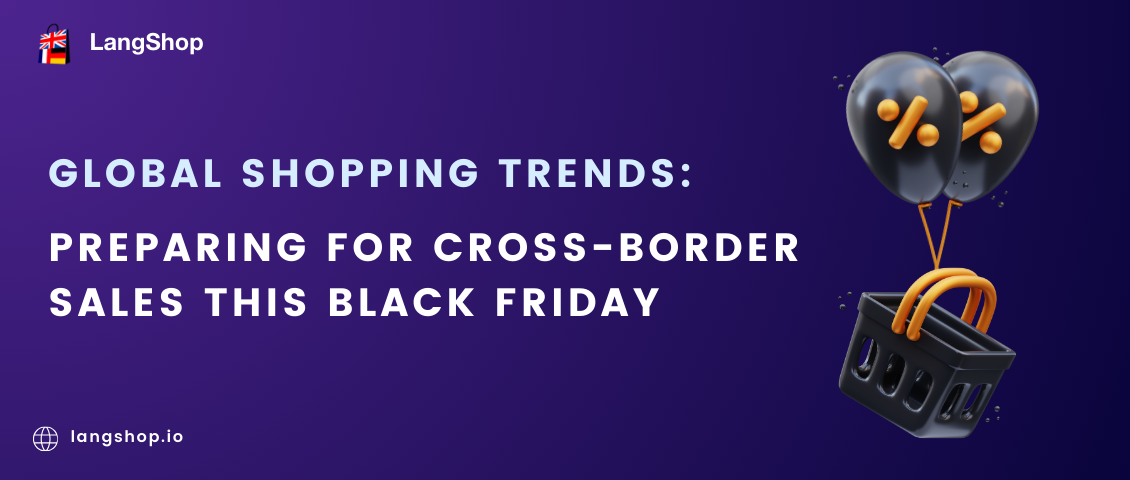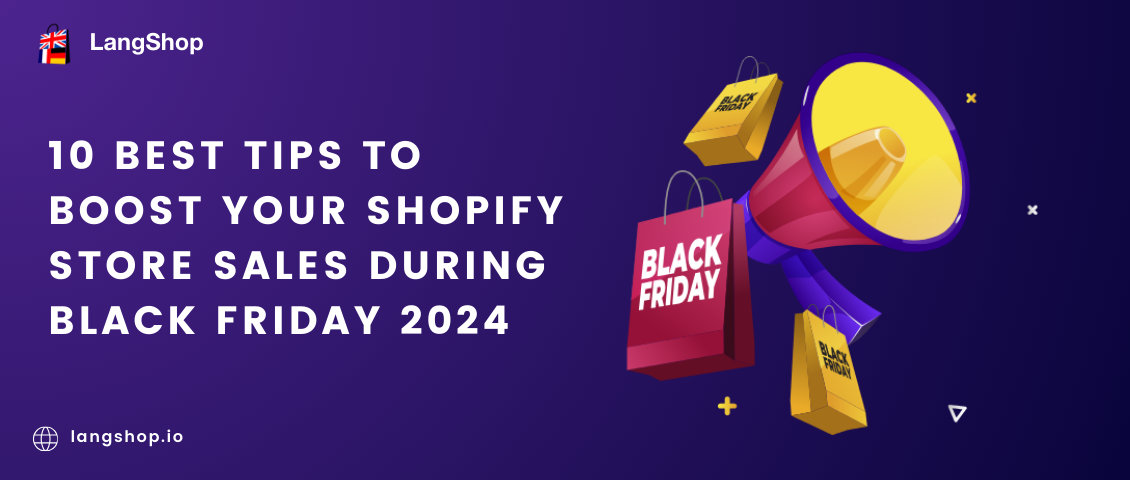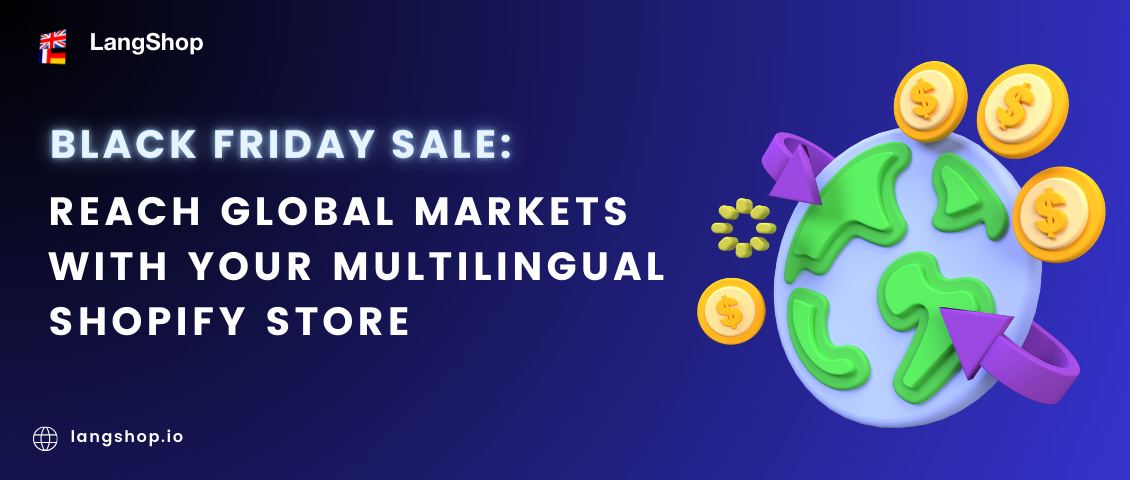So, you've decided to take your business internationally - that's awesome - but despite all the hard work you've put into making your products available internationally, your sales just aren't taking off? It's frustrating, we know.
It can be so that your website is not optimized enough for international SEO. You may have good traffic in your local country, but it doesn’t mean your website performs just as well in other countries. The world of SEO can be overwhelming, especially when you're trying to navigate different markets and cultures. That's why we've put together a comprehensive guide that will walk you through the process of building an international SEO strategy tailored to your business.
When Should You Consider Selling Internationally?
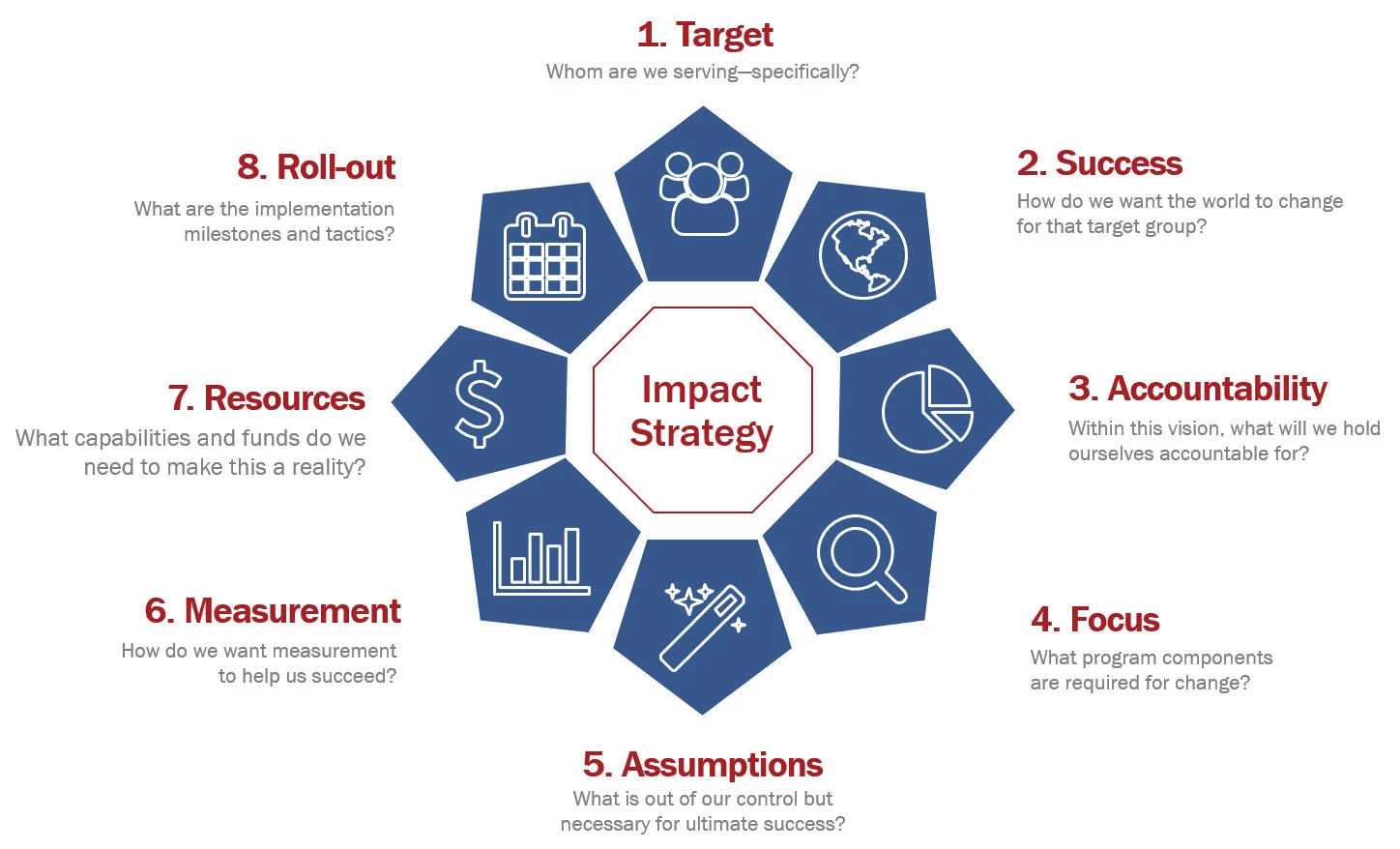
It’s always good for a business to expand its market reach. However, expanding internationally requires time, effort, and financial investments. So, the best practice for international SEO is to analyze if your business is ready for such a huge growth.
There are a few key indicators you should look out for:
1. You receive international traffic
Take a look at your website traffic. It can be easily done through Google Analytics. If you're receiving traffic from foreign countries, it's a good indication that there's demand for your products or services in those markets. Here, you should also take a look at the languages of the countries the traffic comes from. It will help you later when you start working with the international SEO strategy.
2. There is a demand on products you sell
Conduct thorough research on the target market you're considering, including analyzing potential competitors and assessing your prospects. This will help you understand market dynamics and potential demand, and inform your international SEO strategy.
3. Your competitors already sell internationally
Before expanding your business to international markets, it's important to assess your current competitors and understand their global presence. Take a look at your competitors and find out if they're global or local businesses. Analyze their size and popularity, and find out how they're performing in international markets. This will give you valuable insights into the competition you're likely to face and help you determine the viability of your business in the international market.
How to Implement International SEO
To make your online store visible in search results in other countries, having a solid international SEO strategy is super important. This includes focusing on three key areas: content, technical setup, and links.
Content

1. Content translation
When it comes to making your website appealing to foreign buyers, your website content should be your top priority. The first step in this process is to consider translating your website into the languages spoken by your target audience. This will not only improve their customer experience, but it will also help you appear in search results for relevant queries.
In fact, more than 70% of internet users prefer searching in their native language, and search engines are designed to prioritize relevant search results in the same language as the user's query.
To make the translation process easier, you can try using LangShop, a language translation app for Shopify and Magento 2. This app allows you to translate your store using your preferred translation method, and it can even automate many of the tasks related to the translation process, saving you time and effort.
By focusing on translating your website content, you can improve the user experience for your foreign buyers and make your website more visible in search results.
2. Relevant keywords
Along with translating your website content, it's important to also incorporate relevant keywords to strengthen your international SEO strategy. Customers from different countries tend to use different search phrases, and the keywords that work in your local market may not be as effective in the target market. That's why conducting a thorough keyword research for your target countries is necessary.
This will help you identify the most relevant and commonly used keywords in your target market, which can be incorporated into your translated content. By doing so, you can improve your website's visibility in search results and attract more foreign buyers to your online store.
3. Organize site structure
When you translate your website content into multiple languages, you essentially create multiple versions of the same page. This can result in a larger amount of content, which can be confusing for search engines to navigate. To prevent search engines from interpreting your content as duplicate and displaying irrelevant search results, it's important to organize your translated content effectively.
It can be achieved via hreflang tags, unique and descriptive URLs for each page and a comprehensive sitemap.
4. Unique design (UX)
It's worth keeping in mind that simply translating your website content may not be enough to provide an optimal experience for your international audience. To truly create a localized experience, you need to consider the design and layout of your website as well. Colors, images, and even page layouts can hold different meanings or preferences in different countries.
Moreover, the length of words or phrases can vary significantly between languages, which can affect how your pages look and feel. For example, Arabic is a right-to-left language, so you'll need to make sure your page design is adjusted accordingly.
Taking all of these factors into account can help ensure a seamless and engaging experience for your international customers.
Links

As mentioned above, organizing your URLs properly can help reflect the language version of your website and improve your ranking in foreign search results. Now, let's discuss how you can optimize your link-building strategy to boost your international SEO efforts.
1. Link building in foreign countries
To optimize your website for international SEO, it's important to use different URLs for each language version of the page. For it, language indicators are used. For example, www.example.com is the original home page of the website. Its French version URL can look the following way: www.example.com/fr or www.example.fr or www.fr.example.com, depending on the domain structure you prefer.
2. Hreflang tags
Hreflang tags are HTML tags that help search engines to understand the language and regional targeting of a particular page. They are used to indicating alternate versions of the same content in different languages or regions.
To implement hreflang tags, you need to add a specific code to the head section of your website's HTML. The code contains information about the language and region of the page, as well as the URLs of the alternate versions of the same content in other languages or regions.
There are different ways to implement hreflang tags, depending on your website structure and the number of languages or regions you are targeting. Here are some common ways to use hreflang tags:
- For pages with different language versions on different URLs, you should use the rel="alternate" hreflang="x" tags to link each version. For example, if you have a page about shoes in English and German, you would add two hreflang tags to the HTML code of each page, linking to the other language version:

- For pages with the same content in different regions, but on the same URL, you should use the rel="alternate" hreflang="x" tags to indicate the language and region. For example, if you have a page about shipping policies that is the same for the US and Canada, you would add two hreflang tags to the HTML code of the page, indicating the region:

By implementing hreflang tags, you can ensure that search engines understand the language and regional targeting of your pages, and display them correctly in search results for users in different countries.
3. Linking to localized content
Another important aspect of international SEO is arranging link-building within the content. This means that links on the language version of the website should lead to the same language version content. Customers surfing your French website version expect when clicking the link to get to the page with the content written in French.
The same goes for referrals. If French websites refer to your French content, it will have a positive impact on your search engine ranking in France. Therefore, it's essential to build relationships with local influencers and websites to improve your online visibility in the target country.
Technical setup
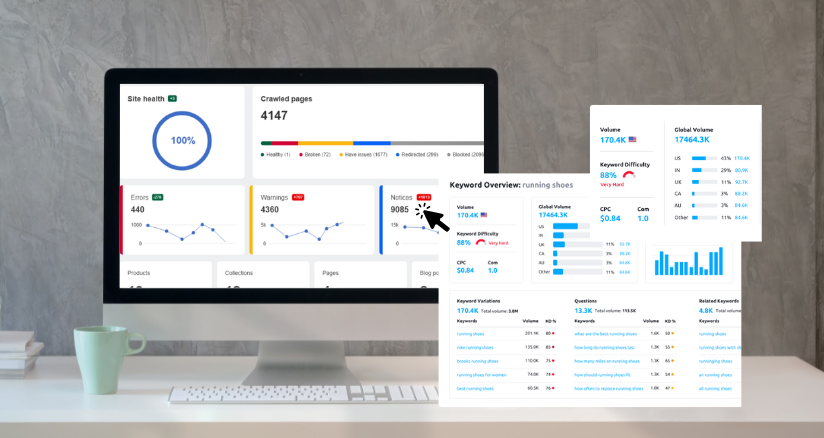
It's important to remember that general SEO principles also apply. Any issues that are hindering your local search rankings can also impact your international SEO efforts.
Furthermore, there are some technical optimizations you can make to improve your SEO, such as optimizing your website speed, using schema markup to provide additional context to search engines, and ensuring that your website is mobile-friendly. Here are three main SEO focuses for multilingual websites.
1. Issues and errors fix
SEO, whether local or international, can be negatively affected by various website issues and errors. Some common issues that can hinder your website's performance in search results include:
- Slow page loading speed: Slow loading pages can result in a high bounce rate and a negative impact on search engine ranking.
- Broken links and 404 errors: These errors can impact the user experience and make it difficult for search engines to crawl your site. To fix this, regularly check for broken links and use redirect links to ensure users and search engines can access your content.
- Duplicate content: Duplicate content can lead to search engines not knowing which page to rank higher. To fix this, use canonical tags to indicate the preferred version of a page, and ensure that your content is unique and original.
- Missing or incorrect meta tags: Meta tags provide information to search engines about your content. Missing or incorrect meta tags can negatively impact your search engine ranking. To fix this, ensure that all your pages have meta tags that accurately describe the page content.
- Non-mobile-friendly design: With more and more users browsing the internet on their mobile devices, having a non-mobile-friendly design can lead to a poor user experience and negatively impact your search engine ranking.
By fixing these website issues, you can improve your website's performance in search results and increase your visibility to both local and international audiences.
2. Sitemap and Robots.txt files
Consider creating a sitemap and a robots.txt file. Both they can speed up the crawling and indexing process of your website, which can improve your website's visibility and ranking in search engine results pages.
A sitemap is a file that contains a list of all the URLs on your website. This helps search engines understand the structure of your website and identify which pages to crawl and index. Sitemaps can also improve the overall user experience of your website by providing users with an easy-to-use list of all the pages, both original and translated, on your site.
A robots.txt file tells search engines which pages to exclude from indexing. This is especially important when you have multiple language versions of your website, as you may have specific pages or sections that are only relevant to certain language versions. By using the robots.txt file to exclude these pages from being indexed by search engines, you can help ensure that only the most relevant content is displayed in search results.
3. Using a CDN to serve content
A content delivery network (CDN) can be an effective tool to improve SERP internationally. A CDN is a network of servers located in different parts of the world, designed to deliver website content quickly and efficiently to users no matter where they are located.
By using a CDN, you can ensure that your website content is delivered to your target audience quickly, regardless of their geographic location. This can result in faster load times, which can improve your website's user experience and ultimately your search engine rankings.
Additionally, CDNs can help with website localization efforts. By hosting multiple versions of your website on servers in different parts of the world, you can ensure that users in different countries are directed to the version of your website that is most relevant to them based on their geographic location.
Find more useful information on how to improve multilingual SEO in our post 7 SEO Optimization Tips To Build a Successful Multilingual Store in 2023.
How to Monitor & Track SEO Results

SEO is a constantly developing sphere. It won’t work if you optimized it once and forgot about it forever. So you should regularly review your site performance and update it corresponding to the latest SEO practices.
To monitor and track your SEO results, there are several steps you can take:
- Set up Google Analytics: Google Analytics is a free tool that allows you to track your website traffic and analyze user behavior. With this tool, you can monitor your website's organic traffic, see which pages are performing well, and identify areas for improvement.
- Use Google Search Console: Google Search Console is another free tool that provides valuable insights into your website's search performance and can be used for international SEO tracking. With this tool, you can monitor your website's search appearance, check for crawl errors, and see which keywords are driving traffic to your site.
- Track your keyword rankings: Use a keyword tracking tool to monitor your website's search engine rankings for targeted keywords. This will help you to identify which keywords are driving traffic to your site and which ones need improvement.
- Monitor your backlinks: Use a backlink monitoring tool to track your website's backlinks and see where your traffic is coming from. This will help you to identify any potential issues with your link profile and improve your SEO strategy.
- Monitor your competitors: Keep an eye on your competitors' SEO performance and strategy to stay ahead of the game. This will help you to identify new opportunities and stay up-to-date with the latest trends in your industry.
It's also important to regularly review your website's traffic and engagement metrics, such as bounce rate, time on site, and conversion rates. This can help you identify areas where your SEO strategy may need improvement, and make adjustments accordingly.




